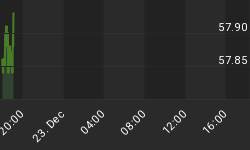Monthly time frame (Continuous contract)
- The Falling wedge carved out during 2015 can have completed a Zig Zag form the 2008 top (ABC), however Oil has still a lot of work to accomplish in order to confirm this bullish scenario
- The next resistance is at R1 = 50.94
- If Oil is able to reclaim and remain above R2 = 62.57 then the odds of a long-lasting bottom would substantially increase.
- Below the current price we have the 10 m ma = 41.66 then S1 = 38.39 and S2 = 33.20 (January 2009 low)
- So far we have a monthly Spinning Top candlestick, which is suggesting a probable pause.
- Monthly oscillators are bullish. It stands out the large positive divergence of the RSI. The trend line off the 2008 high must be breached in order to confirm a major bottom. The MACD so far has a new bullish signal cross which must be confirmed by the end of May.
Weekly time frame (June contract):
- Oil is tagging the upper Bollinger Band.
- So far we have a weekly Hanging Man with resistance at the 50 wma
- If S = 43 is breached there is a pocket of air until the 20 w ma = 39.53
- As long as the 20 wma holds a larger advance from the February low should be in the cards
- Weekly oscillators are bullish: The RSI shows a large positive divergence at the February low, it has broken through a trend line resistance off the May 2014 high and it has reclaimed the 50 line. The MACD also with a positive divergence has triggered a buy signal on February. Hence facing the likelihood a potential pullback price should establish a higher low without endangering a larger move from the February low.
Daily time frame:
- From the February low Oil has carved out a Rising Wedge.
- It is not clear if it is completed.
- If it is a Leading Diagonal during the following pullback, even if it should be sharp, price will establish a higher low (Allowing a larger rally from the February low)
- If the Leading Diagonal plays out we could have two potential targets for the assumed pullback: 1) at the 50 dma = 41.90 2) at the support S1 = the range 39 - 38.50
- Daily oscillators are displaying a negative divergence of the RSI (14) and a MACD that could be rolling down although OBV is rising firmly






















